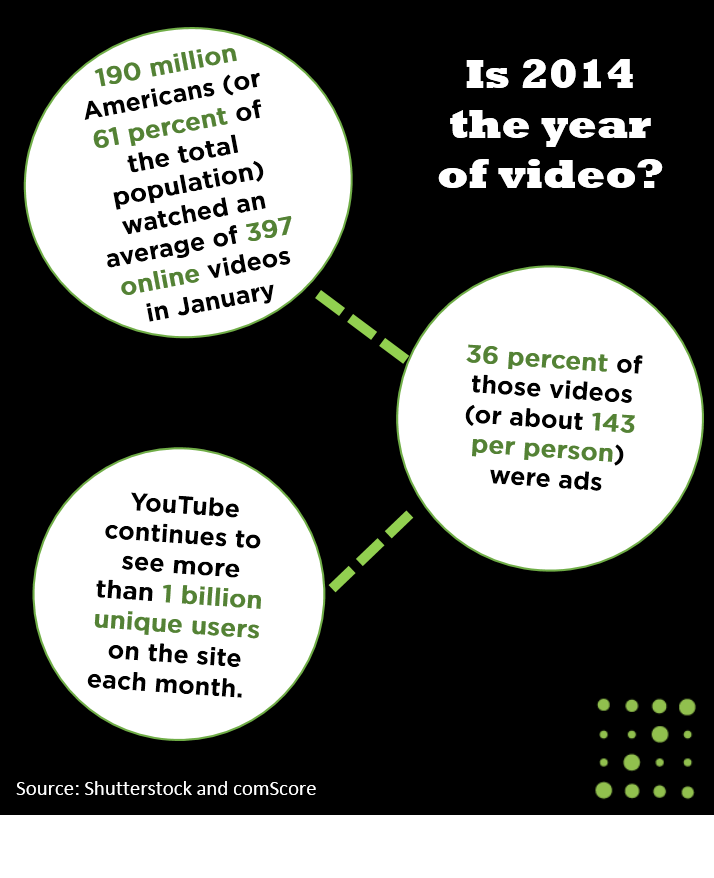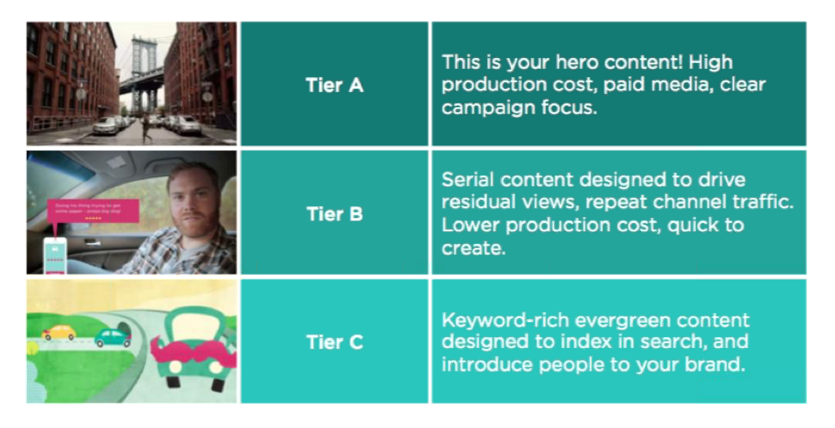Lights, Camera, Action: Best Practices for Video Content Marketing
Many industry leaders have predicted that 2014 would be the year for fueling video content strategies. Now that we’re more than halfway through the year, are the video forecasts holding up? So far, many of the latest statistics show continuous growth of online video creation and consumption:

The supporting facts go on and clients continually ask if video is right for them (or how to make it right for them). That’s why I was so interested in attending a webinar hosted by Social Media Today – an online community for professionals in PR, marketing, and advertising – focused on online video best practices and ways to strategically incorporate video into marketing strategies.
After an hour of flipping in between the WebEx presentation, #SMTLive Twitter chat, and a myriad of emails, I was able to extract some prominent key takeaways from the session:
1. Know where you want to go before you start walking.
If you do not thoroughly know why you are creating video content, then you cannot expect success. Make sure that before you sit down to create a strategy for your video campaign, you are aware of your client’s business needs and objectives. Whether the video is long or short, emotional or humorous, it must fit the message you want to communicate online.
Bottom line: Define your goals and be sure you and your client know what you want to be known for.
2. “If content is king, then the story you tell is your ace.”
The first key takeaway is pretty much the best friend to this one. Marketers know content is key, but not many know what really works best for their brand AND their customers. I repeat: customers.
Before you jump into finalizing a script and storyboard, know what type of content your audience is interested in and how you can provide value to them. Zach Cole, Social Media Manager at Lyft, recommends implementing a tiered content strategy to help deliver optimal storytelling opportunities for your brand.

3. If a tree falls in a forest and no one is around to hear it, does it make a sound?
So what’s the answer when it pertains to video content marketing? The answer is no. If the content you create isn’t bolstering visibility, increasing awareness, producing click-views (you get the picture) then what’s the point. I’m not talking about “going viral” – I’m talking about CAPTURING ATTENTION.
Here are four things you can do to make sure your audience has a grasp on your content:
- Make sure viewers are enticed within the first five to 10 seconds of the video.
- Utilize the benefits of search. Google indexes YouTube captions so include a transcript with your video that optimizes keywords and tags that are relevant to not only your industry and video subject matter, but to consumers’ search habits. It’s also essential to title your video with SEO in mind, including specific keyword phrases near the front of your title. Front-loaded titles index very well in search.
- Distribute your video content in places other than social media, like email. Emails receive 38 percent higher click-through rates when the video is incorporated as a thumbnail image versus embedded links.
- Utilize in-YouTube advertising, like TruView,(or a vendor who specializes in video seeding) to drive video shares, new channel subscriptions and create opportunities to communicate with your customers. Paid advertising gives you the opportunity to get your content in front of the right people by targeting who they are, where they're located and what they're interested in.
Remember, videos can provide a richer user experience but only is someone sees or know about it.
4. Everyone can’t be a movie star (or a director, in this case).
I think it's important to understand that "low production" does not really mean cheap ... just cheaper. The most common misconception is the assumption that businesses have to always outsource video production. Most viewers don’t come to the internet looking for HD/3D video, instead they’re looking for relevant content.
Video marketing can come in various shapes and sizes, and the opportunities are endless. For example, you can get creative with short, low production videos in response to Twitter questions.
Being too focused on perfection tends to steal from the message of the content.